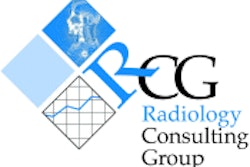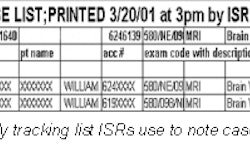Along with ease of use, image accessibility, and the availability of hanging protocols, image quality remains a crucial factor in PACS implementation. Yet discussions about the specific resolution needed for diagnosis have faded somewhat -- because technology has done some catching up over the past few years.
One can now find a sufficiently high-resolution workstation that is generally acceptable for diagnosis. As a result, the image quality issues and questions have been shifted from image resolution to image integrity and consistency. The problem is how to guarantee that an image is shown at different workstations in exactly the same manner. In addition, if an image is viewed six months later, e.g. as a comparison study, how can it be displayed the same way? Last but not least, when a print is made for surgery, for example, how do we know that the film matches the image on the monitor?
Image integrity and consistency are indeed major issues, judging from the comments audience members made during demonstrations of hard- and soft-copy consistency at the 1999 RSNA InfoRad. Many users are networking their printers from different modalities such as ultrasound, CT/MRs and even CR systems to the same printer. In the good old days, when each printer was connected with a direct digital link to those modalities, the printer manufacturer could simply adjust the corresponding input to match the film with the monitor at the modality.
As long as no one switched the inputs, everyone was happy. Unfortunately, this trick doesn't work in a networked environment, where a printer doesn't know where the images came from. Software upgrades are often required to support look-up tables to be sent electronically to perform the same matching.
Then there is the monitor calibration issue. The major vendors have put a lot of effort into developing user-friendly calibration software. There are even packages that will manage your calibration data for you by keeping track of when a monitor was calibrated last, including its statistics. However, there seems to be a lack of understanding of calibration, and the infrastructure and organization needed to maintain a consistent Q/C program is often missing. Many departments run test films every morning through their processors, but do not even perform a simple calibration of their printers and monitors just once a month. When I asked the audience at our seminars how often they calibrate their monitors, the answer seems to range from once a week to once every six months. The correct answer is probably somewhere in between.
There are tools in place, as well as standards. The DICOM standard has been extended to standardize the mapping of the pixel values on the monitors and to film on printers. Test images are available, and the AAPM has been working to come up with a "super-SMPTE" -- which is actually close to being done. Even if the monitor manufacturer has not provided the means to do the calibration, one can purchase relatively inexpensive third-party software that can check monitor calibration. So what is holding this back, and why are there still issues?
It is largely an issue of education and training. People have been learning to deal with film-quality issues for more than a hundred years, while experience with soft copies is still lacking. One would think that the generation that has grown up with television -- and that understands that an old TV set doesn't provide the same image quality as when it was new -- would expect the same behavior of a workstation. But the connection is often lost.
Technically, the image quality issue has largely been solved by standards included in DICOM. The tools are already in place, and there is ongoing work on test images and procedures. Seminars on image presentation consistency were conducted at the Integrating the Healthcare Enterprise (IHE) initiative at the 2000 RSNA conference and the 2001 Healthcare Information and Management Systems Society (HIMSS) meeting.
What has been lacking is the upgrading of equipment and education and training of the user community. It's a challenge, but it can be done. As a matter of fact, it has to be done in order to facilitate widespread PACS implementation. One of the main reasons for this article is to generate questions and stimulate a forum discussion, so please don't hesitate to submit your comments and reactions to the online forum.
By Herman OosterwijkAuntMinnie.com contributing writer
August 31, 2001
Herman Oosterwijk is president of OTech, a healthcare technology consulting and training firm. OTech is organizing an image quality seminar in Las Vegas on September 28. Please visit their Web site at www.otechimg.com for details.
Mr. Oosterwijk will also be co-moderating a forum on PACS workstation image quality next week in AuntMinnie.com's PACS Digital Community. To post a question or comment on this topic, please visit our forum here.
Copyright © 2001 AuntMinnie.com


















